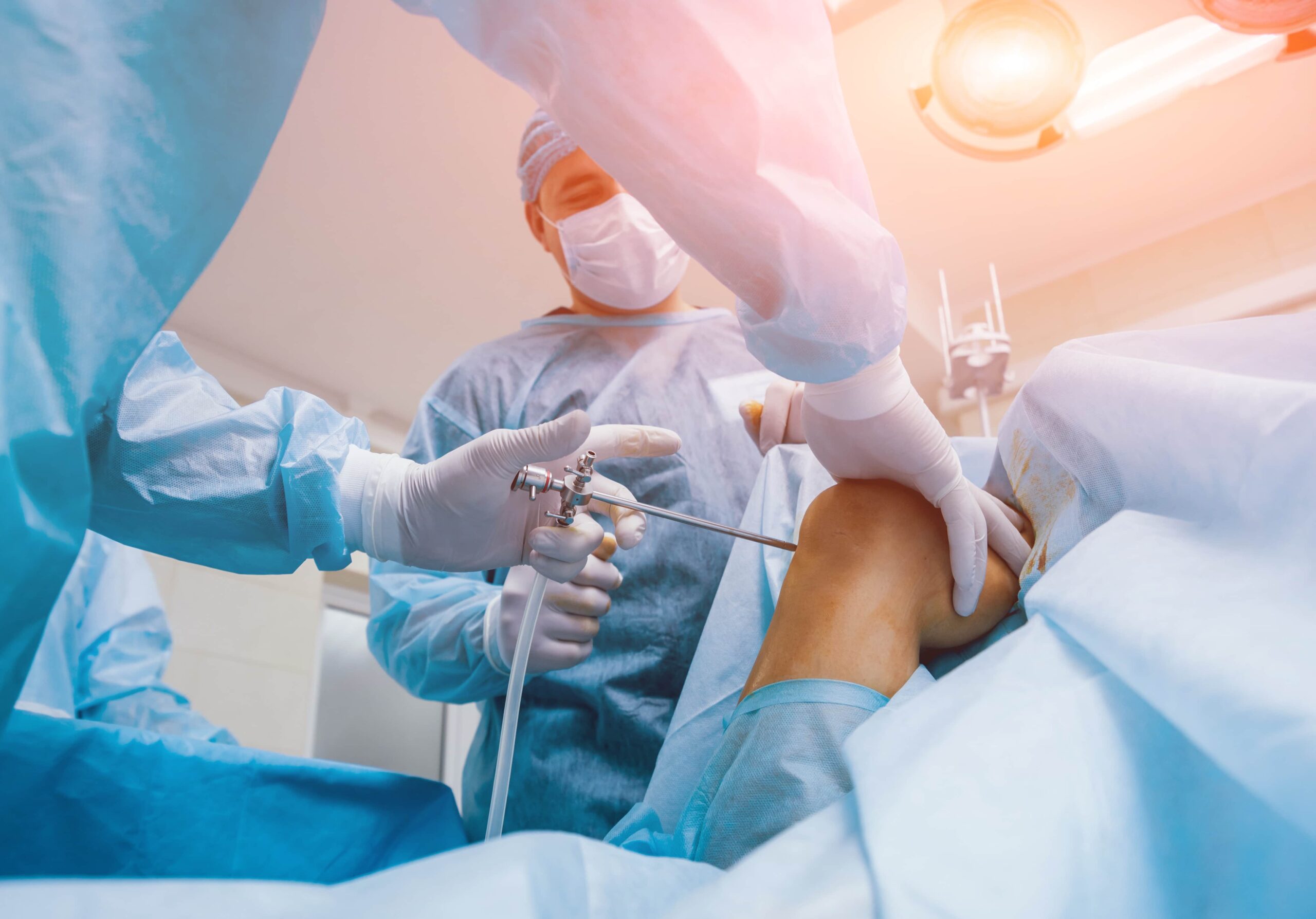
ARTHROSCOPY SURGERY
Arthroscopy surgical procedure in which an arthroscope is inserted into a joint. Arthroscopy is a term that comes from two Greek words, arthro- meaning joint and – scope meaning to examine.
Arthroscopy is performed in a hospital operating room under general anesthesia.
The arthroscope is a small fiber-optic viewing instrument made up of a tiny lens, light source and video camera. The surgical instruments used in arthroscopic surgery are very small (only 3 or 4 mm in diameter), but appear much larger when viewed through an arthroscope.
The television camera attached to the arthroscope displays the image of the joint on a television screen, allowing the surgeon to look, for example, throughout the knee-at cartilage and ligaments, and under the kneecap. The surgeon can determine the amount or type of injury and then do the repair. Usually, this procedure is performed on a patient under spinal or general anesthesia.
Often, Arthroscopic surgeries for sports injuries are used in a blend with other methods or open surgeries. The most common condition, whereArthroscopysurgery is used, is to treat tendon tears in the knee. Other conditions include torn ligaments & cartilage, carpal tunnel syndrome, inflammation of the joint lining, tears in rotator cuffs & loosening of cartilage and bones.
After the surgery, the cut will be sewn shut and dressed neatly. In most cases, patients need almost no pain medication as compared to the medication required to recover from open surgery.
Types of Arthroscopic Surgery
- Knee Arthroscopy
- Shoulder Arthroscopy
- Hip Arthroscopy
- Ankle Arthroscopy
- Elbow Arthroscopy
- Wrist Arthroscopy
Benefits of surgery include:
How to prepare
Many doctors will recommend a tailored preparation plan, which may include gentle exercises.
It is important for a person taking any prescription or over-the-counter (OTC) medications to discuss them with the doctor. An individual may need to stop taking some medications ahead of the surgery. This may even include common OTC medications, such as ibuprofen (Advil).
A person may need to stop eating up to 12 hours before the procedure, especially if they will be general anesthesia. A doctor should provide plenty of information about what a person is allowed to eat or drink.
Some doctors prescribe pain medication in advance. A person should fill this prescription before the surgery so that they will be prepared for recovery.
Procedure
The type of anesthetic used to numb pain will depend on the extent of the arthroscopy.
A doctor may inject a local anesthetic to numb the affected knee only. If both knees are affected, the doctor may use a regional anesthetic to numb the person from the waist down.
In some cases, doctors will use a general anesthetic. In this case, the person will be completely asleep during the procedure.
If the person is awake, they may be allowed to watch the procedure on a monitor. This is entirely optional, and some people may not be comfortable viewing this.
The procedure starts with a few small cuts in the knee. Surgeons use a pump to push saline solution into the area. This will expand the knee, making it easier for the doctors to see their work.
After the knee is expanded, the surgeons insert the arthroscope. The attached camera allows the surgeons to explore the area and identify any problems. They may confirm earlier diagnoses, and they may take pictures.
If the problem can be fixed with arthroscopy, the surgeons will insert small tools through the arthroscope and use them to correct the issue.
After the problem is fixed, the surgeons will remove the tools, use the pump to drain the saline from the knee and stitch up the incisions.
In many cases, the procedure takes less than 1 hour.
Risks
Like any surgery, knee arthroscopy poses some risks, though serious complications are uncommon.
A person has an increased risk of infection and excessive bleeding during and after the surgery.
The use of anesthesia also comes with risks. In some people, it may cause allergic reactions or breathing difficulties.
Some risks are specific to knee arthroscopy. They include:
- Chronic stiffness in the knee
- Accidental damage to tissues and nerves
- Infection inside the knee
- Bleeding in the joints
- Blood clots
These risks are uncommon, and most people recover without incident.
Dr. Vinil Shinde focused treatment areas are Joint Replacement, Sports Medicine & all kinds of Trauma. He also does Primary, Revision Joint Replacements (Hip, Knee & Shoulder) and Arthroscopic Ligament Reconstruction in the knees & shoulder.
Contact us for more details
If you think you are facing similar conditions, or have suffered from them in the past, please contact the Chirayu Clinic team to schedule an appointment at: +91 772 008 0890 and www.drvinilshinde.com
